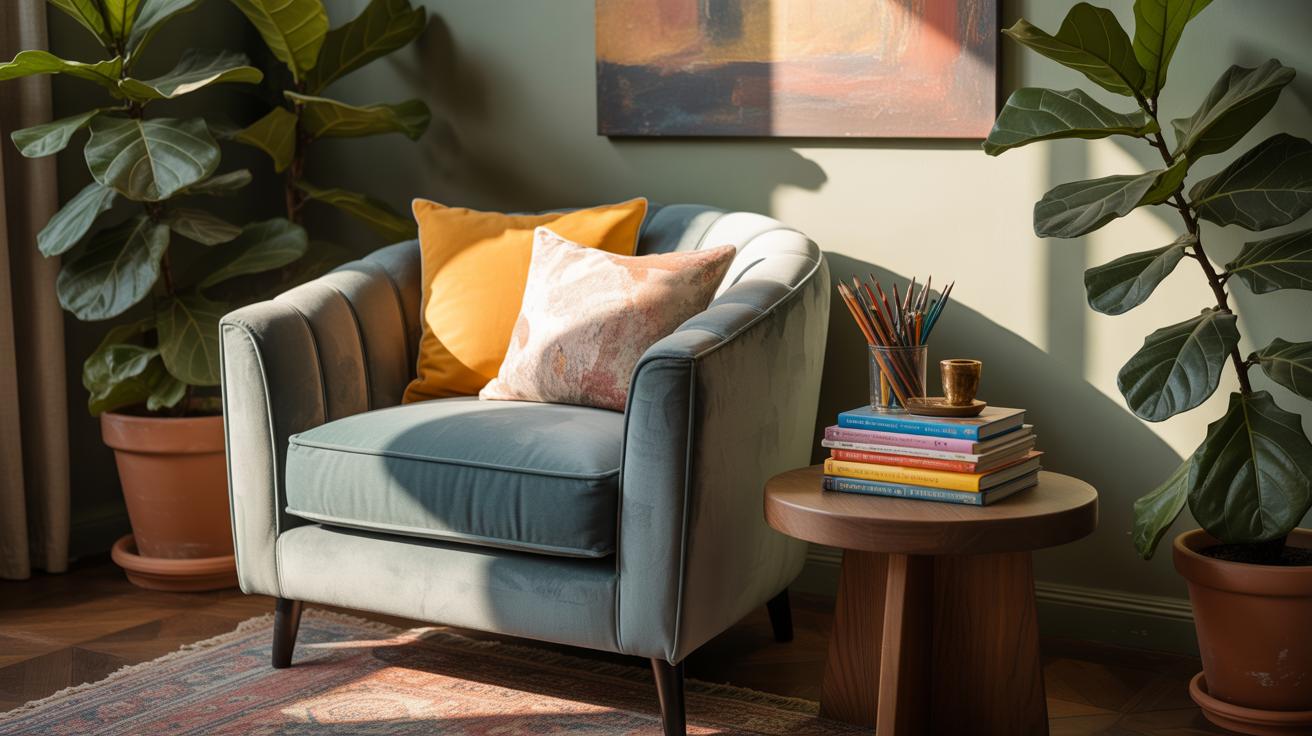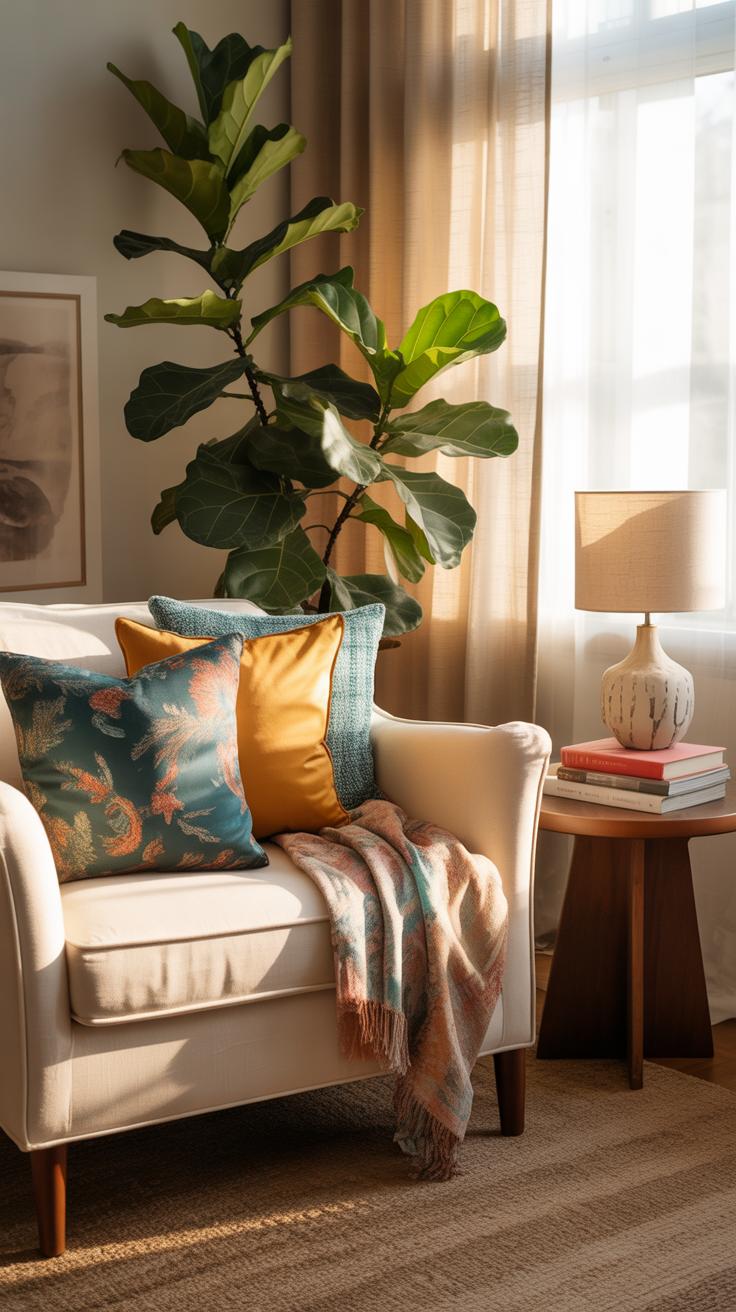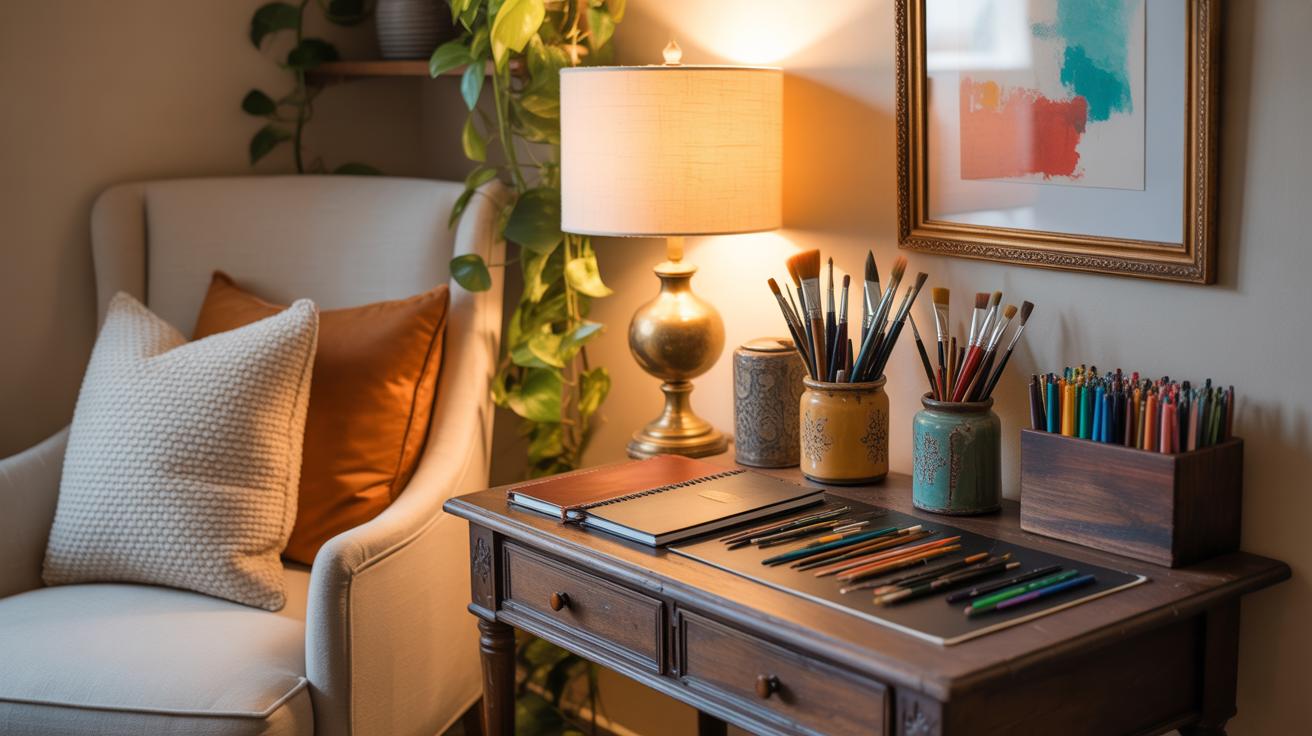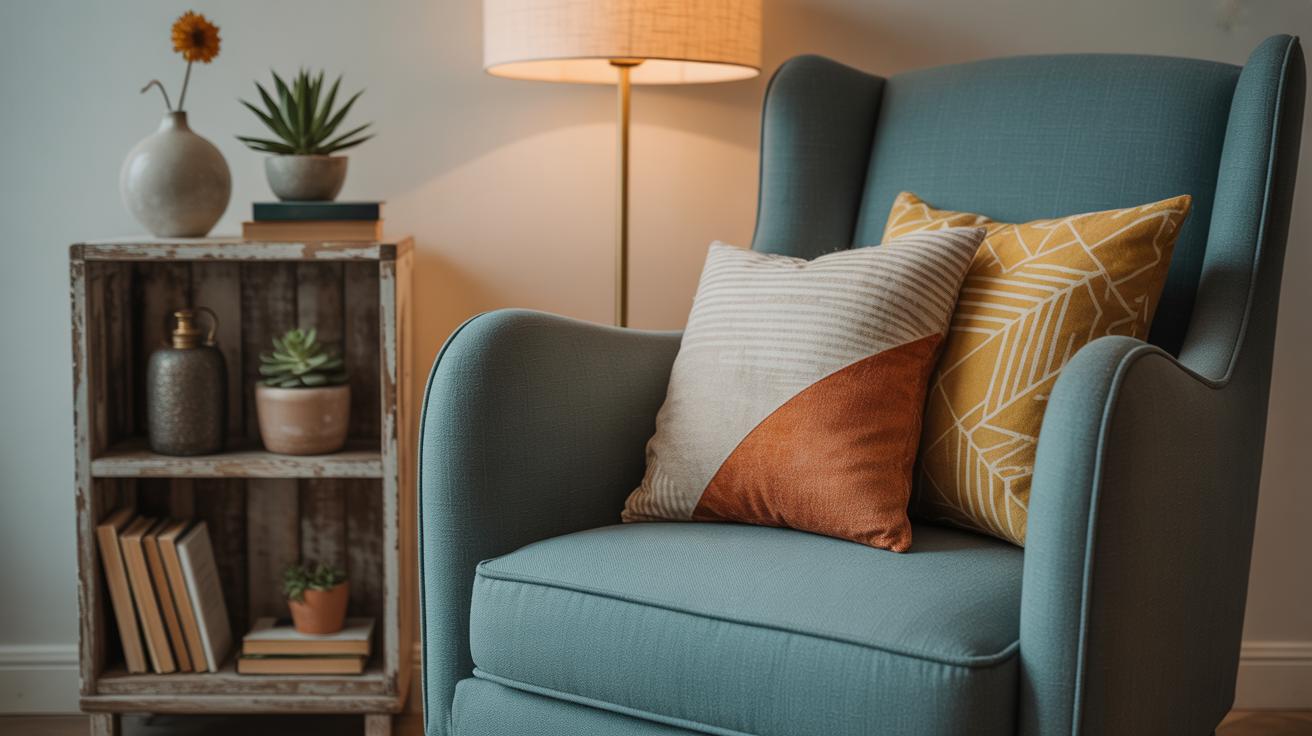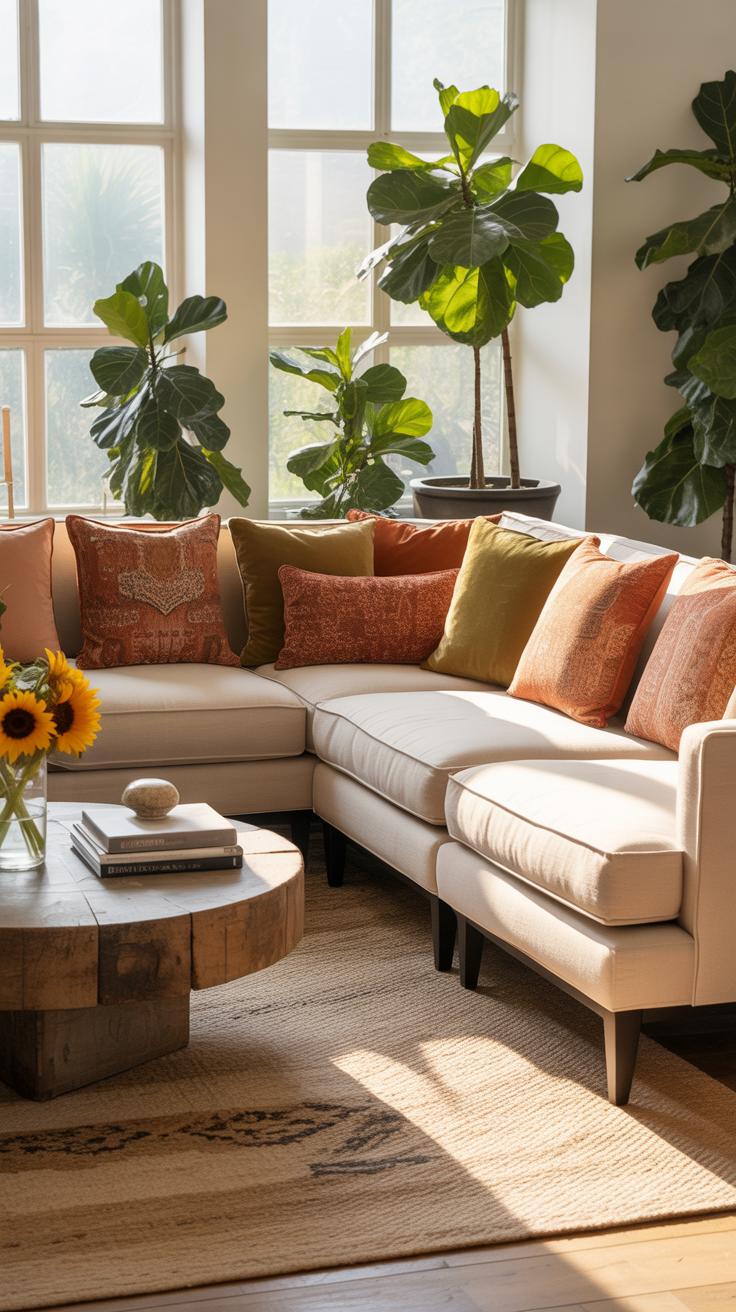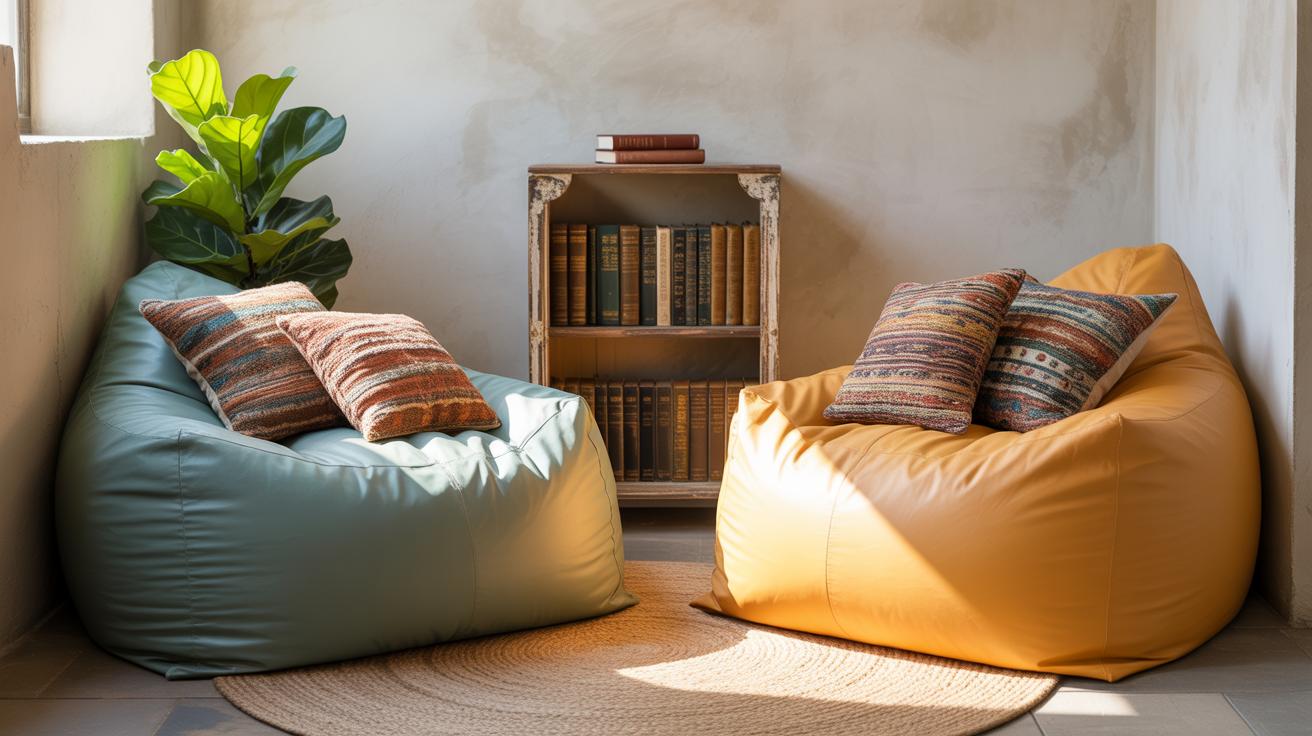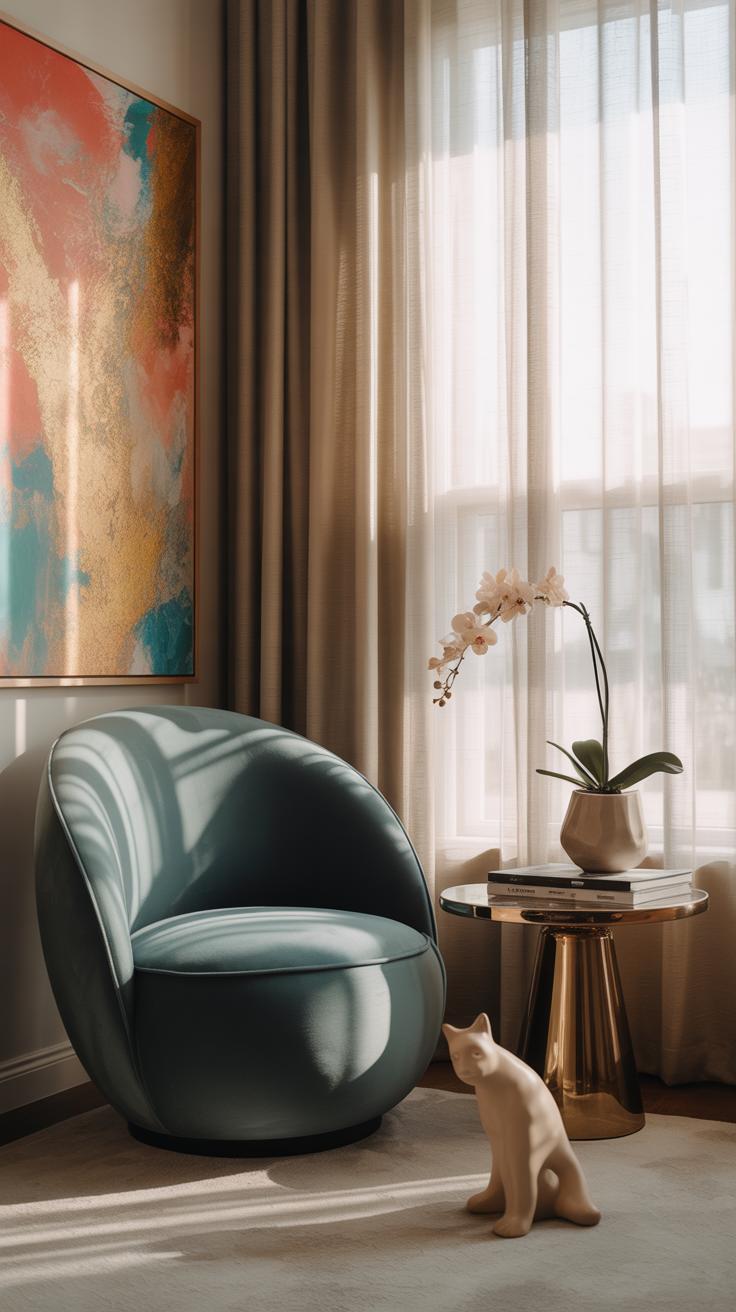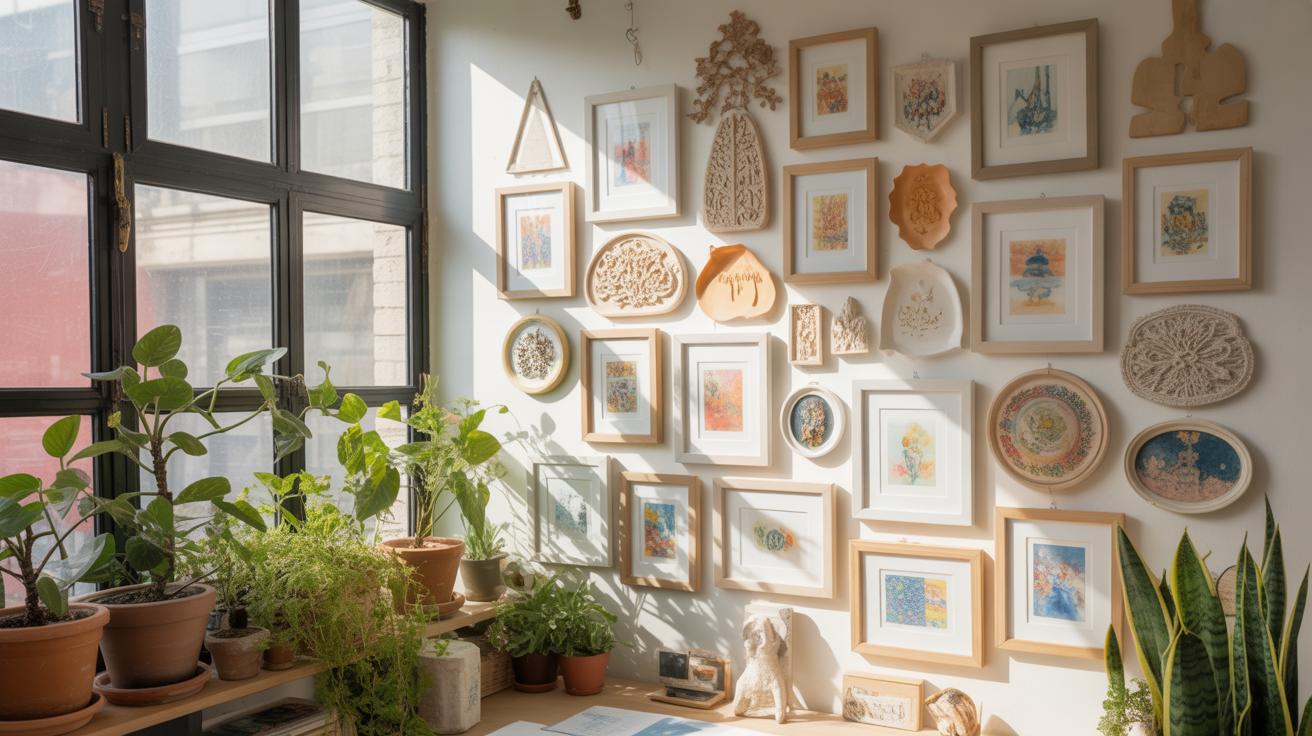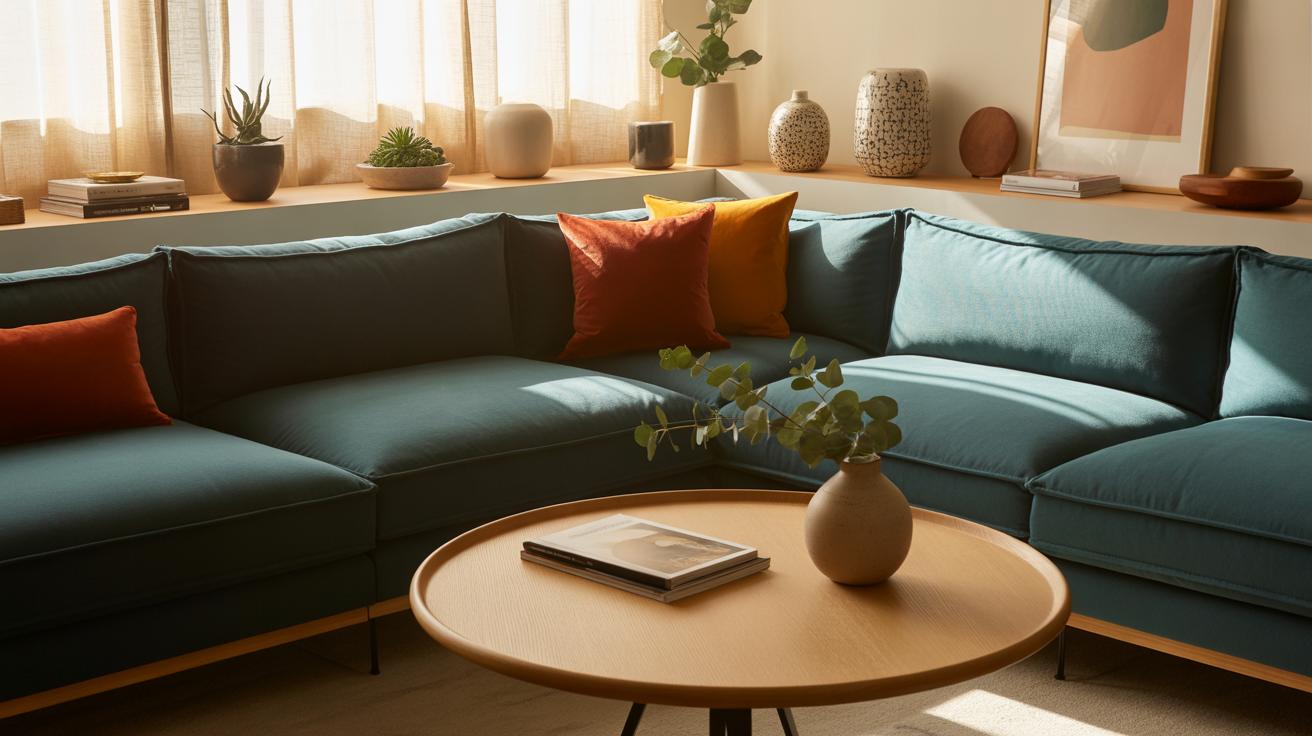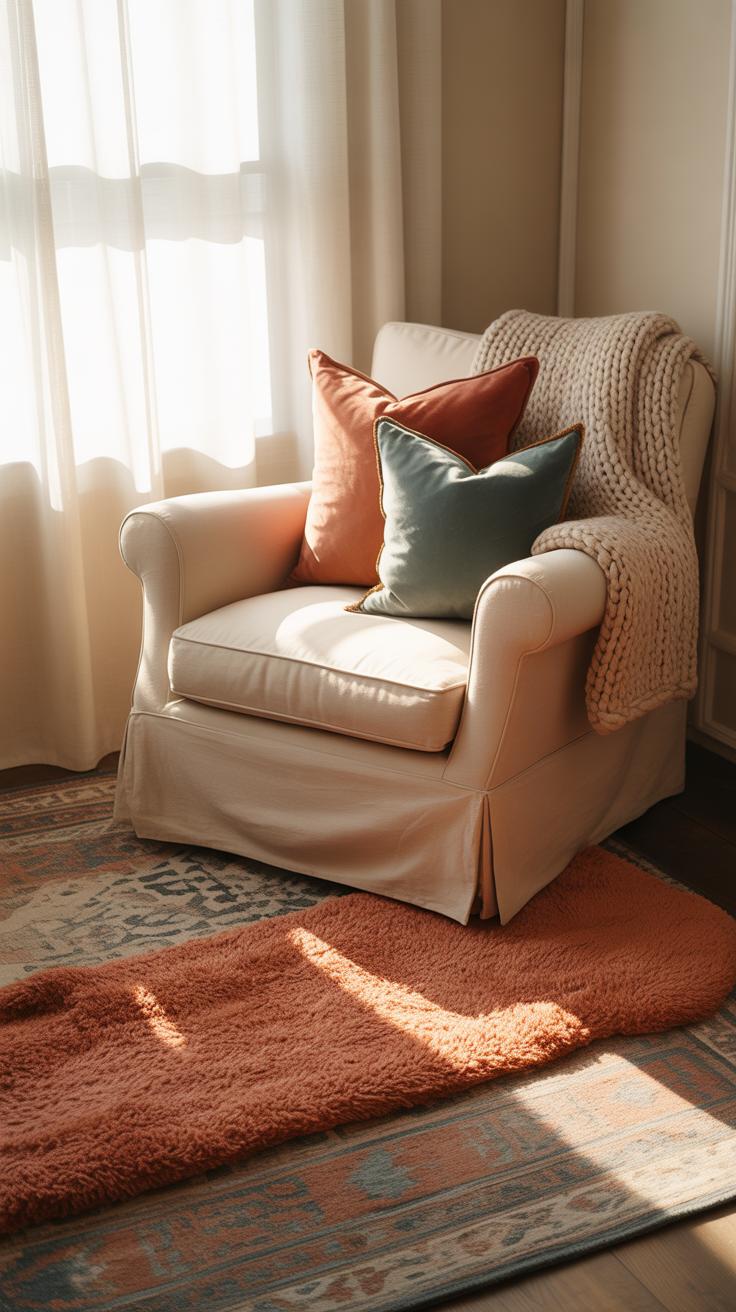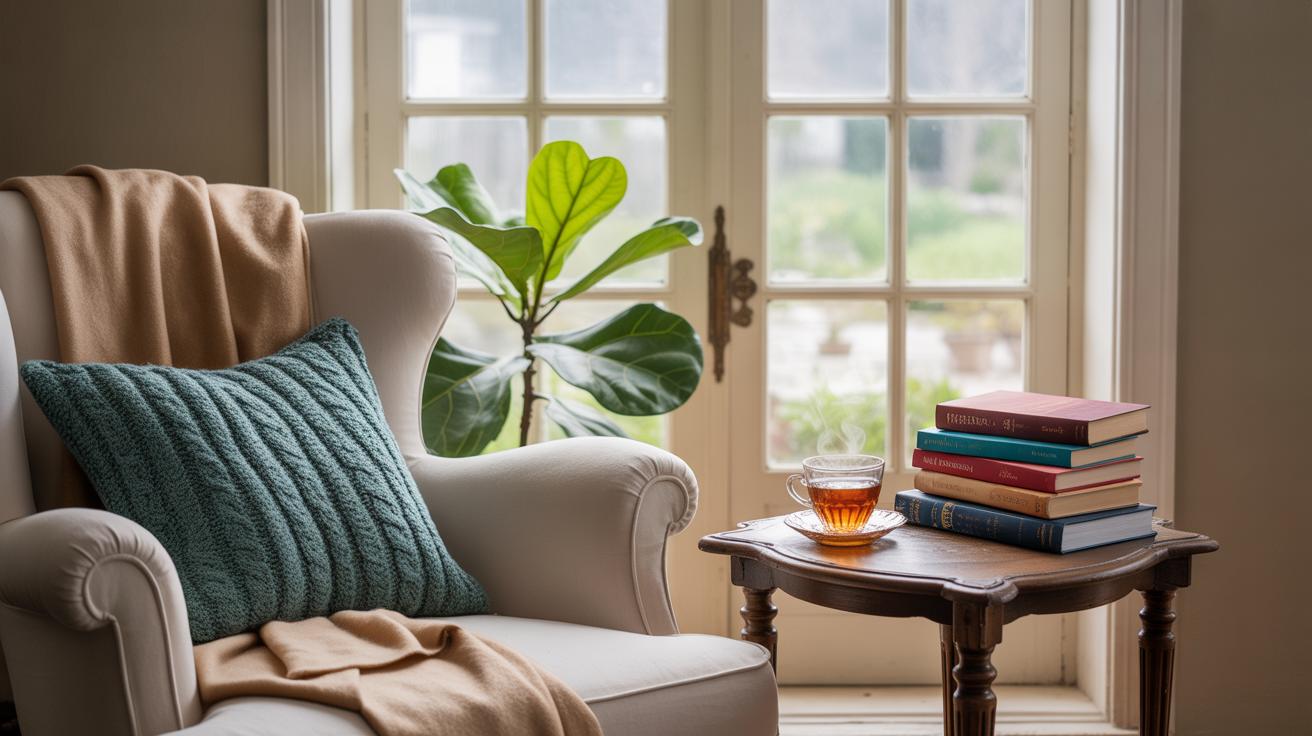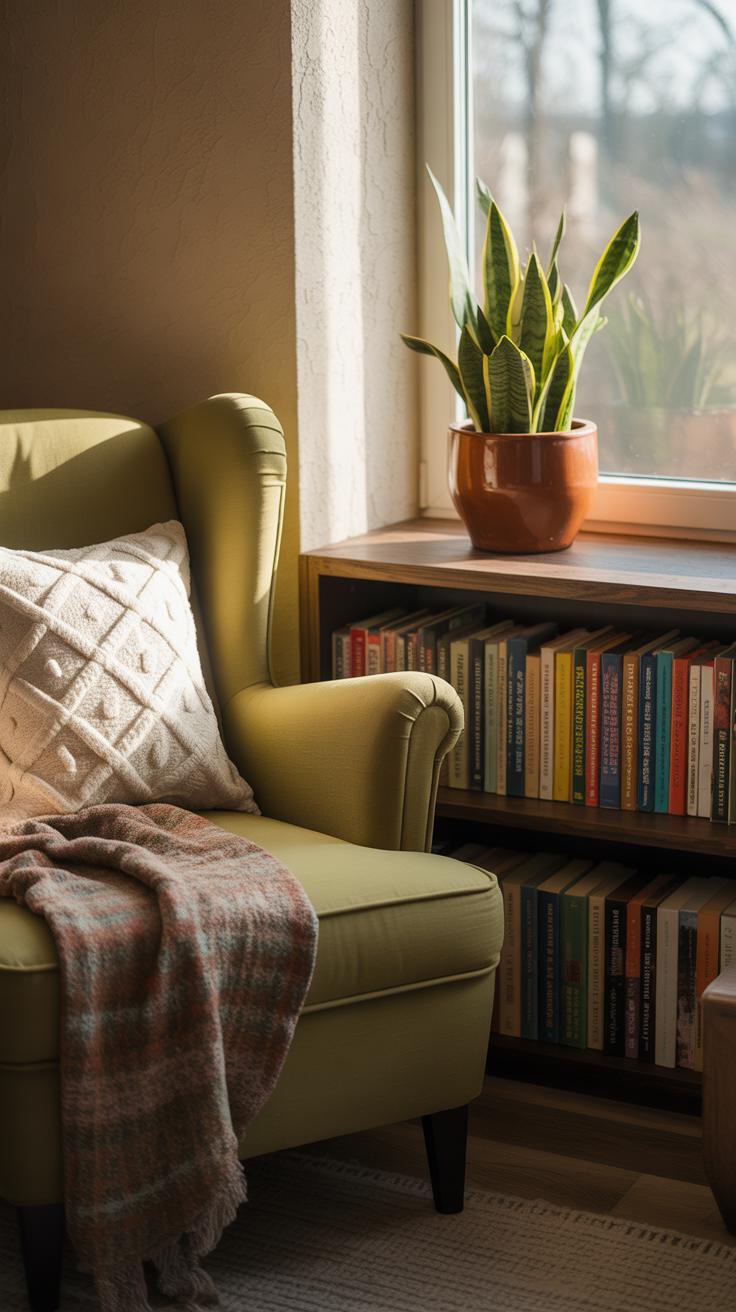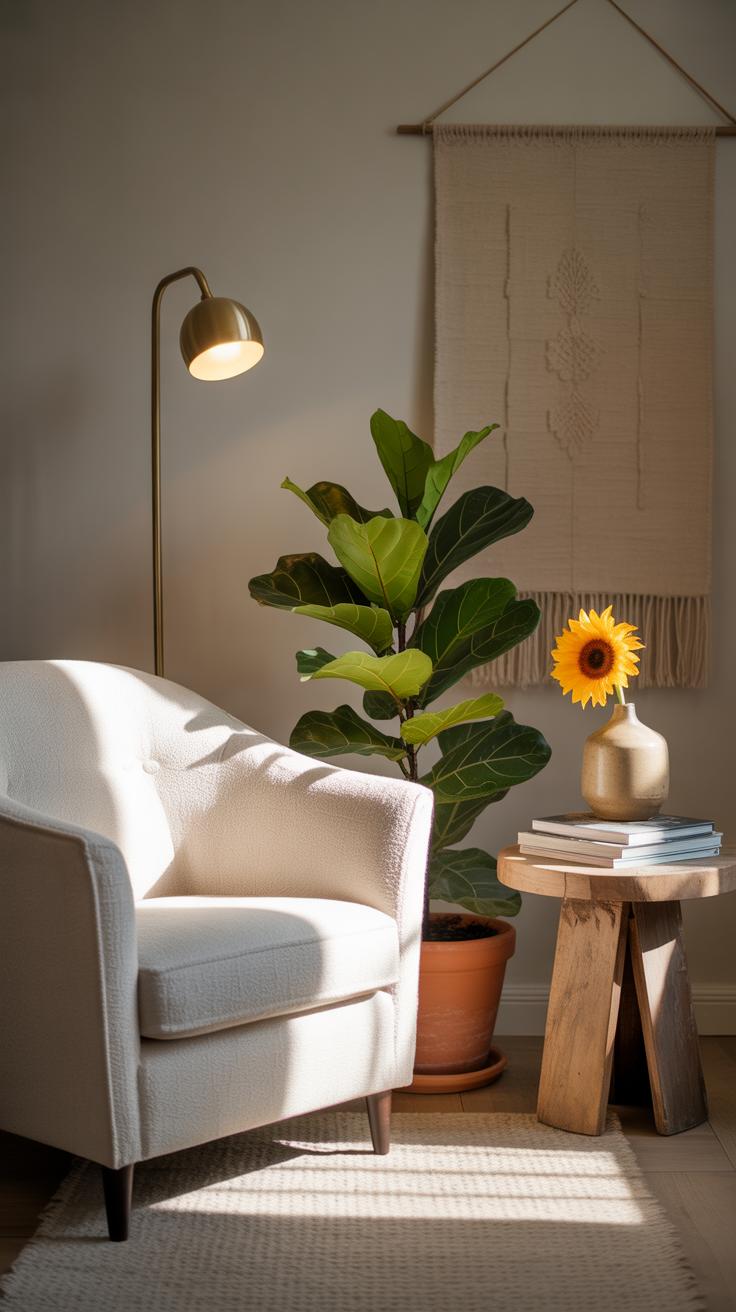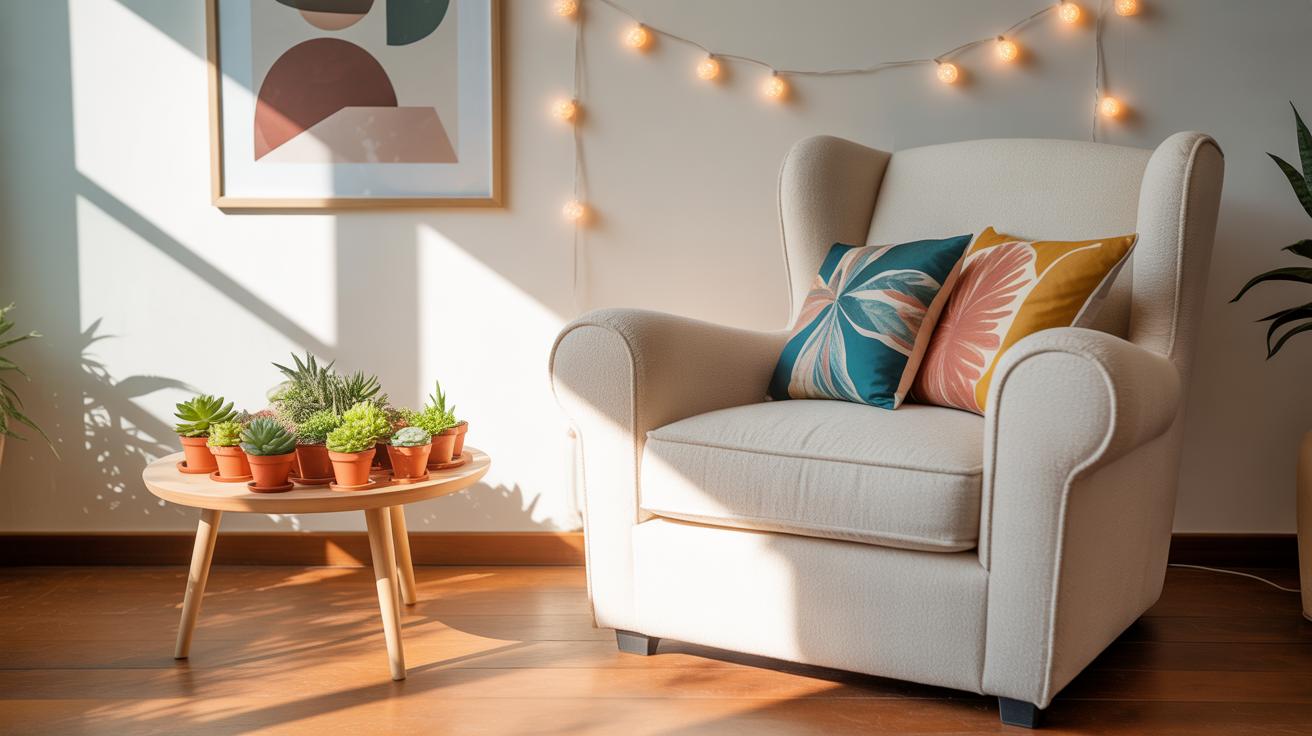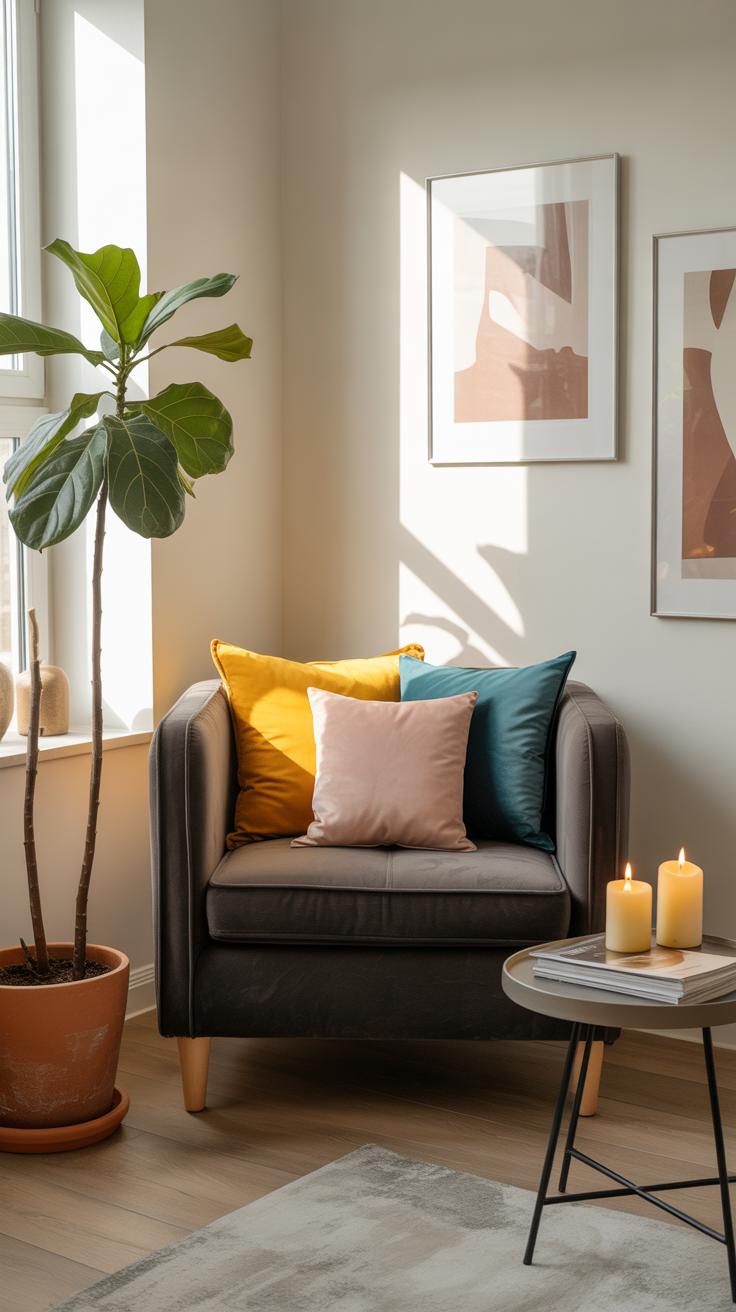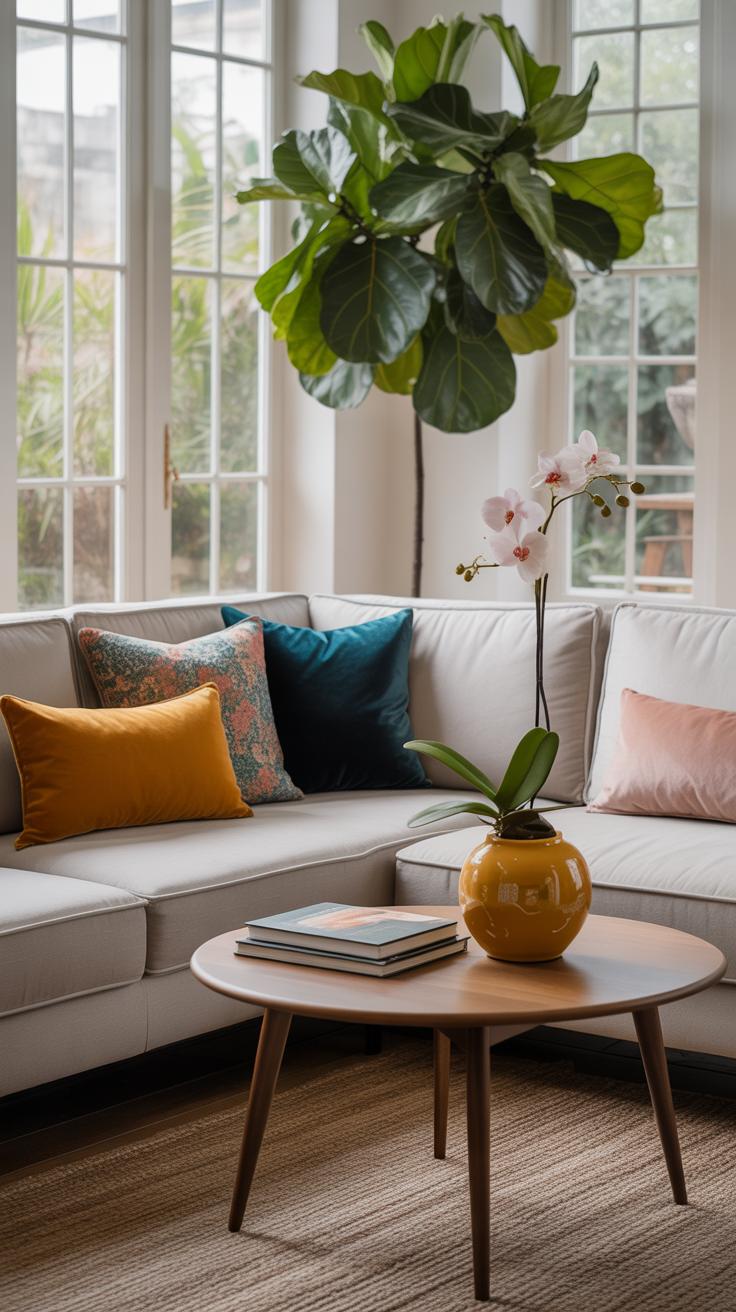Introduction
Living room corners often get overlooked, but they hold great potential to brighten your home’s atmosphere. With the right decor ideas, you can turn any corner into a cozy artistic space that reflects your personality and style.
This article covers easy and practical ideas to create inviting corners. We’ll discuss how a well-decorated corner can affect the vibe of your living room, how to choose art and decor that fits, and steps to assemble your perfect corner space. You’ll find useful tips and examples to help make your living room corner a special spot in your home.
Why corners matter in living rooms
Corners often get overlooked when we think about furnishing or decorating a living room. But those little nooks can actually play a surprisingly big role in how the space feels and functions. I mean, consider this: a corner isn’t just an empty gap. It can be either a quiet spot to retreat or a visual anchor that adds character to the whole room.
Sometimes corners serve practical purposes—like housing a floor lamp, a small bookshelf, or a plant stand. Other times, they’re purely decorative, providing a frame for artwork, a sculptural piece, or a cozy chair that invites you to sit and think. Creating a cozy artistic corner can give your living room personality and a sense of calm, something I’ve personally appreciated when I just want to step away from the busier center of the room.
Using these corners well also helps with the way your living room flows. Instead of feeling like a disjointed space, corners can guide movement and make everything feel connected. For example, placing a side table with a lamp and a comfortable chair in the corner might encourage reading or quiet conversations without interrupting the main seating area.
Many people struggle with corner spots because they’re awkwardly shaped or just seem too small. That leaves the corners empty or cluttered with things that don’t add value. When neglected, these spaces can make the living room feel unfinished or cramped, like you missed a chance to add warmth or style. But I think if you treat your living room corners thoughtfully, they can transform the entire mood of the room. Have you ever noticed how a well-styled corner can make the whole space feel more inviting?
Choosing the right corner space
Picking the perfect corner in your living room for decoration takes a bit more thought than just grabbing the first empty spot you see. You might want to think about how much natural light reaches that area. Sunlight influences how colors appear, especially if you’re planning to showcase art or textiles. A corner bathed in daylight can feel warm and inviting, but too much direct sun can fade fabrics or damage certain art pieces over time.
Size plays a tricky role here. Some corners are spacious enough for a comfy chair and a small table, while others might be narrow or oddly angled. Don’t shy away from corners with weird shapes—they can be charming if you work with rather than against them. Maybe adding a tall plant or a slim bookshelf can turn an awkward space into something useful.
Also, consider how close this corner is to your main furniture. Is it near the sofa or some frequently used seating? If so, it might become a natural extension of your living space. But if it’s tucked away, it could feel like a private nook, which is great if you want a retreat or a quiet spot for creativity.
Selecting cozy furniture pieces
Choosing the right furniture for your living room corner can be trickier than it seems. You want pieces that feel comfortable enough to sink into after a long day but also fit the overall vibe of your space. Chairs with soft cushions are an obvious choice, but don’t overlook small sofas or benches. They can offer more seating without overwhelming the corner, especially if the shape blends into the walls.
When picking furniture for relaxing and reading, consider an armchair with good back support and a bit of recline. A wingback chair or a lounge chair with an ottoman can work well. I’ve found that I’m less likely to sit in a spot that’s too upright or rigid, even if it looks great. So, comfort often beats style here—but that doesn’t mean you have to sacrifice the look. Textured fabrics or muted colors can keep the area inviting without shouting for attention.
For really tight corners, smaller furniture options can save the day. Think of a narrow bench with a slim profile, a cube ottoman that doubles as storage, or even a simple, petite armchair with slim legs. These pieces fill the space without crowding it. Also, modular seating might surprise you—some designs let you rearrange pieces easily, fitting them into awkward spots. So, what furniture have you come across that fits both comfort and a small corner perfectly? Sometimes, the best pieces are the ones you stumble upon by chance.
Incorporating art into your corner
Choosing art for a living room corner can feel a bit tricky because it needs to resonate with the space without overpowering it. Paintings work well, but maybe not large canvases that swallow the corner; instead, think smaller, more intimate pieces or a cluster of framed prints arranged thoughtfully. Sculptures are another option—something tall and slender can fill vertical space without clutter. I once placed a ceramic figure in my reading nook, and it really drew the eye without feeling forced.
When picking art, consider the colors and textures in the corner. You want pieces that echo or gently contrast with the existing decor. Sometimes subtlety works better than bold statements—an abstract watercolor can add softness, while a wood carving might lend warmth.
Art styles also play a role. Cozy corners often thrive with pieces that feel inviting rather than stark. Rustic or folk art can add a handmade touch, and impressionist paintings might quietly brighten a shadowed space. Oddly, minimalist art, while clean, can sometimes feel cold in a snug corner—so choose carefully.
If you’re into DIY, try making simple paper collages or canvases with textured paint. Even framed fabric scraps or handmade mobiles hung from a corner shelf bring personality. These projects don’t require much skill but can deeply personalize your space—plus, there’s something satisfying about creating your own art rather than buying it.
Layering lighting for mood
Living room corners can be tricky when it comes to lighting. You want more than just overhead bulbs glaring from above, right? Think about blending different types of light sources—each with its own quality—to shape the atmosphere bit by bit.
Start with a floor or table lamp for general illumination. They give a soft, localized glow that defines the space without overwhelming it. Then, add some string lights or fairy lights around shelves or draped casually along walls. There’s something almost nostalgic about those tiny bulbs twinkling quietly in a corner. They aren’t bright alone but sprinkle just enough warmth to feel inviting.
For the purest cozy touch, candles make a strong case. You must keep safety in mind—never place them too close to flammable items, and maybe opt for LED candle alternatives if you’re forgetful or have pets. These flickering lights add depth to your corner’s vibe without hogging space or requiring too much fuss.
- Use one main lamp for steady light.
- Twinkle string lights to soften or highlight textures.
- Introduce candles or LED versions for warmth and movement.
You might find layering these different lights changes how you experience the corner throughout the day. What feels too bright at first can become perfectly snug when balanced just right. Have you tried mixing these before? Sometimes uneven or unexpected light placement surprises in the best ways.
Adding texture with textiles
Choosing cushions and throws
When picking cushions and throws for a cozy corner, you want to think about more than just color. Texture plays a big role—soft wool, linen, or even a slightly nubby cotton can make the space inviting. Sometimes, mixing a smooth velvet with a rougher knit throws off the expected in a good way. Colors shouldn’t always match perfectly, though. Maybe a couple of muted earth tones with a pop of something brighter, like mustard or teal, can lift the mood without overwhelming the spot.
I’ve noticed that natural fabrics tend to feel more soothing, especially when you want to curl up there with a book. Still, synthetic blends aren’t entirely off the table—they can hold up better if you’re prone to spills or pet hair. You might hesitate about adding too many patterns, but a few simple geometric shapes or subtle stripes can add interest without clutter. Usually, layering is key—several cushions with different weights and sizes combined with a cozy throw casually draped over the armrest or chair works well.
Rugs that define your corner
A rug can anchor the corner visually, but picking the right size can be tricky. It doesn’t have to cover the entire floor space, but it should be large enough that at least part of the seating or furniture rests on it. That small overlap helps connect the elements, making the corner feel like one composed area rather than random bits thrown together. Something around three-by-five feet often works but adjust based on your space’s actual dimensions.
Patterns on rugs are another interesting point. Bold prints might make the corner stand out too much or clash with cushions and throws. But a subtle pattern—herringbone, faint stripes, or a muted floral—can gently tie the corner’s colors together. Sometimes, a rug edges into the artistic territory, becoming a statement piece itself. It’s hard to say if that’s too much or just enough—it depends on your personal taste and what else is happening visually in the room. What kind of rug do you find yourself drawn to when imagining your ideal nook?
Decor tips for small corners
Multi-use furniture for small spaces
Small living room corners can quickly feel cramped if you’re not careful. So, picking furniture that serves more than one purpose makes sense. Think a storage ottoman—you can sit on it, rest your feet, and stash blankets inside. Or a slim armchair with a side pocket to hold books. Foldable or nesting tables help, too. They save space when not in use but are ready for guests or a drink when needed.
Sometimes, I find a small bench with hidden storage perfect. It’s not just a seat but a place to hide away clutter, which tends to pile up in corners. These pieces help keep the area tidy without sacrificing comfort.
Vertical space and shelving ideas
Rather than crowding the floor, look up. Walls offer an often-underused opportunity. A couple of wall-mounted shelves can display art, small plants, or personal treasures. Floating shelves don’t take up bulky space and create a layered look that’s interesting without overwhelming the corner.
One time, I added a tall, narrow bookshelf in the corner of my living room. It instantly added character and was perfect for storing my favorite items. Don’t forget hooks or pegboards, either—they can hold things like hats or decorative items and clear the floor space below.
Have you thought about combining wall art and shelving? Sometimes a simple ledge can hold framed prints leaning against the wall. It keeps the vibe casual but artistic, which is often the spirit of that cozy corner we all want.
Corner decor mistakes to avoid
Overcrowding the space
Filling a living room corner until it bursts might seem like making good use of space, but it often backfires. Too many items can create visual chaos and make the corner feel cramped rather than cozy. I once tried stuffing a small corner with a stack of books, a plant, and a chair—only to find it overwhelming and not inviting at all. You want the corner to feel open enough for breathing room but still have character.
Avoid piling on random objects just because you think the corner “needs” something. Instead, focus on one or two key pieces. Maybe a single comfortable chair and a floor lamp, or a small shelf with a few meaningful items. Keep surfaces clear. Regularly editing out what doesn’t work can stop clutter from creeping back. Ask yourself: does this add to the feeling of calm and artistry, or just noise?
Ignoring lighting needs
Lighting is often overlooked, yet it can make or break a corner’s atmosphere. A dimly lit nook may look dull or sad, while harsh overhead lights can kill any sense of warmth. I’ve seen corners that were beautifully decorated but underwhelming simply because the lighting was off—too cold, too bright, or too dark.
Think about the mood you want. Soft, adjustable lighting tends to work best for artistic, cozy corners. Use lamps with warm bulbs or string lights if the space suits it. Don’t just rely on the room’s main light—corners can feel like forgotten shadows otherwise. Consider the purpose too; if you want a reading nook, bright enough task lighting matters. Lighting isn’t just practical; it’s part of the decor itself.
Setup checklist for corner decor
Setting up a living room corner takes some thought. You want it cozy but also a bit artistic, right? Start by figuring out what purpose the corner will serve. Will it be a reading nook, a mini gallery, or a place to simply relax? This helps determine the type of furniture and art you’ll need. Next, measure the space carefully. Often, corners can look overwhelming if pieces are too big or feel empty if too small. Balancing size matters.
Think through the flow. Place bigger items first—maybe a comfy chair or small sofa—then layer in side tables or floor lamps. After that, arrange your art. Don’t overcrowd the walls; instead, pick a few key pieces that complement the furniture but don’t compete. Test various placements before making it permanent.
Color and texture tie everything together. Pick fabrics that fit your room’s overall vibe. For example, if your living room has cool tones, perhaps warm wood textures or soft, neutral cushions could add warmth without clashing. Mixing textures—like a knit throw with a smooth leather chair—can add depth, but keep colors fairly unified. Sometimes it’s tricky to guess, so bring some fabric samples home to see how they look in your room’s lighting.
In the end, your corner should invite you in, feel like an extension of the room, yet hold its own character. Achieving all of this isn’t immediate, but following a checklist keeps you on track and stops the corner from becoming that forgotten, unused spot.
Example case living corner makeover
Initial corner issues
The corner in this living room was overlooked for years. Blank walls and a cramped little space that felt more like a gap than a part of the room. It was awkward, honestly, with nothing inviting or useful there. No seating, no decor, just a forgotten spot collecting dust. Lighting was poor — a dull ceiling light barely reached in. Without personality or function, it almost felt like the room was missing a piece, even though you couldn’t quite say what that piece was.
What bothered me the most was how disconnected this corner seemed from the rest of the living room. It didn’t invite anyone to stay or relax. There was no sense of warmth or creativity, just emptiness.
Final look and feel
After the makeover, the corner feels like the heart of the room. A small, cushioned armchair now sits invitingly near a slender wooden side table. A tall, leafy plant brings softness and life — something the space clearly needed. The walls got a fresh coat of muted blue paint, a subtle change that helped create a calm, artistic atmosphere without overwhelming.
A small gallery of framed prints, carefully arranged but not too perfect, adds a touch of personality and intrigue. The warm glow of a floor lamp changes everything after dark, making the space feel cozy enough for quiet reading or just daydreaming.
It’s not perfect or overdone, but it’s real and welcoming. You might pause there with a book or your thoughts. The room itself feels more complete as this corner now invites you to linger, to create, to simply be. It’s surprising how just a few simple changes can shift the way you experience a whole space.
Conclusions
Using creative decor ideas, you can transform your living room corner into a cozy artistic escape. Thoughtful choices in furniture, colors, and art bring warmth and charm to this small area.
This radiant corner will invite you and your guests to relax and feel inspired. With simple easy-to-follow steps, anyone can craft a unique living room corner that shines with personality and comfort.

